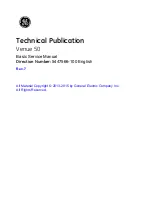Creating Sounds and Effects
4-1
4
Creating Sounds
and Effects
The presets in the LXP-15 II provide you with a wide range of sounds and effects
which you can use right out of the box. You can create new sounds simply by
calling up one of these presets and experimenting with the parameters until you
get a sound that you like. Not only can you adjust parameters with the front-panel
ADJUST knob, but you can change them automatically with a number of control
Sources. This ability to assign a control Source to an effect parameter is called
“patching.” It is one of the most powerful features of the LXP-15 II. Patching
allows you to create sounds and effects that change dynamically in response to
real-time performance.
To exploit the full potential of the LXP-15 II’s patching abilities, it is helpful to
understand which parameters control different aspects of an effect—and what,
in fact, each effect is. Following is a brief overview of some common effects. If
you are already familiar with these, you may want to skip ahead to the next
section where we discuss patching on the LXP-15 II.
Sounds have distinctive characteristics which make them recognizable to us. It
is no surprise then that an analysis of the sound waves generated, for example,
by a piano can be readily distinguished from those generated by a wind
instrument. The art of synthesizing sounds such as these is now commonplace.
The simulation of effects is more concerned with our perception of sounds and,
generally, requires synthesis of the environment in which sounds occur —
effects can create the impression of a piano playing in a padded cell, for
example, or in a concert hall.
All sounds are affected by their environment. From the moment a sound is
generated and begins to travel (at the rate of one foot in about .9 milliseconds),
it begins to change — merely passing through the air absorbs some of its energy.
In the real world, sounds are distorted in a variety of ways between the time they
occur and the time it takes them to reach our ears. They bounce off of near and
far surfaces, each of which absorbs some of their energy and reflects them in
various directions. Sounds seem to change in pitch when generated by moving
objects as they approach and recede from us. Our perception of sounds
changes as we approach their source, and as we hear them in different settings.
Even the difference in the amount of time it takes a sound to reach our two ears
contributes to the audio clues we use to identify sounds and to accurately locate
their sources.
All of these characteristics can be used to simulate environments, to create the
effect of sounds reaching us from a great distance, of performances in vast halls
or tiny rooms. Extensive research into the acoustic properties of rooms, etc. has
gone into the design of the LXP-15 II. The basic parameters of different
environments have already been defined and are at your disposal when creating
your own effects.
Sounds and Effects
Summary of Contents for LXP-15 II
Page 1: ...LXP 15 II Multi Effects Processor Owner s Manual...
Page 4: ...LXP 15 II Multi Effects Processor Owner s Manual...
Page 16: ...Lexicon LXP 15 II Owner s Manual 1 10...
Page 71: ...Lexicon LXP 15 II Owner s Manual 5 10...
Page 89: ...Lexicon LXP 15 II Owner s Manual 7 14...
Page 93: ...Lexicon LXP 15 II Owner s Manual 8 4...


















